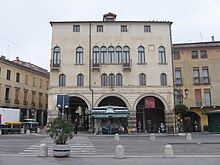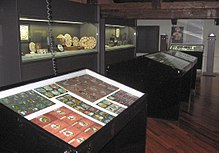
The magic lantern, also known by its Latin name lanterna magica, was an early type of image projector that used pictures—paintings, prints, or photographs—on transparent plates, one or more lenses, and a light source. Because a single lens inverts an image projected through it, slides were inserted upside down in the magic lantern, rendering the projected image correctly oriented.

A camera obscura is the natural phenomenon in which the rays of light passing through a small hole into a dark space form an image where they strike a surface, resulting in an inverted and reversed projection of the view outside.

A slide projector is an optical device for projecting enlarged images of photographic slides onto a screen. Many projectors have mechanical arrangements to show a series of slides loaded into a special tray sequentially.
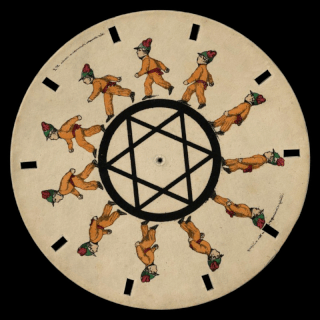
The phenakistiscope was the first widespread animation device that created a fluid illusion of motion. Dubbed Fantascope and Stroboscopische Scheiben by its inventors, it has been known under many other names until the French product name Phénakisticope became common. The phenakistiscope is regarded as one of the first forms of moving media entertainment that paved the way for the future motion picture and film industry. Similar to a GIF animation, it can only show a short continuous loop.

Phantasmagoria, alternatively fantasmagorie and/or fantasmagoria, was a form of horror theatre that used one or more magic lanterns to project frightening images – such as skeletons, demons, and ghosts – onto walls, smoke, or semi-transparent screens, typically using rear projection to keep the lantern out of sight. Mobile or portable projectors were used, allowing the projected image to move and change size on the screen, and multiple projecting devices allowed for quick switching of different images. In many shows, the use of spooky decoration, total darkness, (auto-)suggestive verbal presentation, and sound effects were also key elements. Some shows added a variety of sensory stimulation, including smells and electric shocks. Such elements as required fasting, fatigue, and drugs have been mentioned as methods of making sure spectators would be more convinced of what they saw. The shows started under the guise of actual séances in Germany in the late 18th century and gained popularity through most of Europe throughout the 19th century.
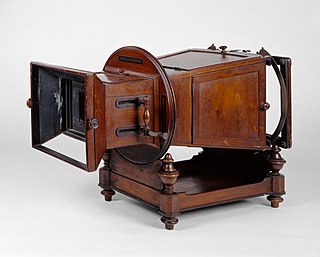
The megalethoscope is a larger version (mega-) of the alethoscope, which it largely superseded, and both are instruments for viewing single photographs with a lens to enlarge and to create some illusion of three-dimensionality. They were used to view photographic albumen prints that were coloured, perforated and mounted on a curved frame. Night effects were achieved when viewing pictures in transmitted light from a fitted oil or kerosine lamp and a daytime version of the same scene was seen when lit by the reflected light from two side mirrors. They are sophisticated versions of the peep show, and were designed by Carlo Ponti of Venice before 1862. Lke the similar graphoscope which descends from the eighteenth century zograscope predating photography, these devices were, and are, often confused with the stereoscope which was of a different design and effect. Improvements to the megalethoscope over the alethoscope, mainly the addition of a compound lens, are detailed in The Practical Mechanic's Journal of 1867.

Precursors of film are concepts and devices that have much in common with the later art and techniques of cinema.

Johann Zahn was the seventeenth-century German author of Oculus Artificialis Teledioptricus Sive Telescopium. This work contains many descriptions and diagrams, illustrations and sketches of both the camera obscura and magic lantern, along with various other lanterns, slides, projection types, peepshow boxes, microscopes, telescopes, reflectors, and lenses. As a student of light, Zahn is considered the most prolific writer and illustrator of the camera obscura.

Prato della Valle is a 90,000-square-meter elliptical square in Padua, Italy. It is the second largest square in Italy and one of the largest in Europe. Today, the square is a large space with a green island at the center, l'Isola Memmia, surrounded by a small canal bordered by two rings of statues.
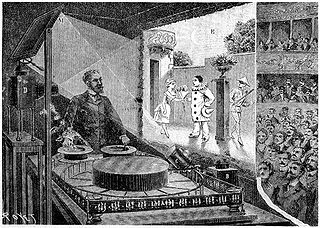
The Théâtre Optique is an animated moving picture system invented by Émile Reynaud and patented in 1888. From 28 October 1892 to March 1900 Reynaud gave over 12,800 shows to a total of over 500,000 visitors at the Musée Grévin in Paris. His Pantomimes Lumineuses series of animated films include Pauvre Pierrot and Autour d'une cabine. Reynaud's Théâtre Optique predated Auguste and Louis Lumière's first commercial, public screening of the cinematograph on 28 December 1895, which has long been seen as the birth of film.

Leonard Lipton was an American author, filmmaker, lyricist and inventor. At age 19, Lipton wrote the poem that became the basis for the lyrics to the song "Puff, the Magic Dragon". He wrote books on independent filmmaking and become a pioneer in the field of projected three-dimensional imagery. Leonard Lipton developed 3D cinema technology that is used in RealD 3D cinemas. His technology is used to show 3D films on more than 30,000 theater screens worldwide.

Carlo Ponti was a Swiss-born optician and photographer active in Venice from about 1848.

A projector or image projector is an optical device that projects an image onto a surface, commonly a projection screen. Most projectors create an image by shining a light through a small transparent lens, but some newer types of projectors can project the image directly, by using lasers. A virtual retinal display, or retinal projector, is a projector that projects an image directly on the retina instead of using an external projection screen.

The Cinema Museum - Tomàs Mallol Collection is a museum dedicated to the world of film and moving images.
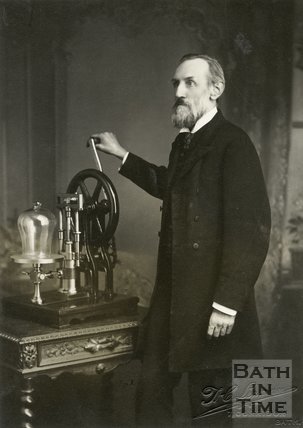
John Arthur Roebuck Rudge was a British scientific instrument maker and inventor, who lived in Bath, noted for his contributions to the development of moving pictures. He collaborated with William Friese-Greene and, around 1880, he invented a device known as the Biophantic Lantern. This rotated seven square slides around a circular lamp housing, using a movement similar to the Maltese Cross, later found in many film projectors. The light was obscured between images via a pair of ground glass shutters. The only surviving sequence – likely the only one ever made – shows Rudge taking off his own head and putting it under his arm. The trick was carried out by Friese-Greene playing the body. This lantern and the slides are now to be found in the Cinémathèque Française.

A Terrible Night is an 1896 French silent comic trick film by Georges Méliès, who is also the actor in the film. It was released by Méliès's Star Film Company and is numbered 26 in its catalogues, where it is listed with the descriptive subtitle scène comique.
Henry Langdon Childe (1781–1874) was an English showman, known as a developer of the magic lantern and dissolving views, a precursor of the dissolve in cinematic technique. While the priority question on the technical innovations Childe used is still debated, he established the use of double and triple lanterns for special theatrical effects, to the extent that the equipment involved became generally available through suppliers to other professionals. By the 1840s the "dissolving view", rooted in Gothic horror, had become a staple of illustrated talks with restrained animations.
The choreutoscope is the first pre-cinema device which employed a system similar to early film projectors. It was the first projection device to use an intermittent movement, which became the basis of many cine cameras and projectors. It was formed by a sheet of glass on which different drawings were made, and the sheet was mounted on a type of Maltese cross mechanism, which made the image move suddenly. The most common drawing was the 'dancing skeleton' in which six sequential images of a skeleton were animated in the viewing pane.
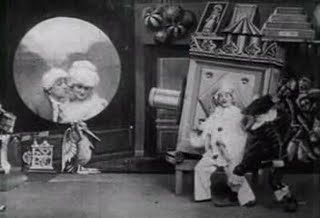
La Lanterne magique, sold in the United States as The Magic Lantern and in Britain as The Magic Lantern, or the Bioscope in the Toy Shop, is a 1903 French silent trick film by Georges Méliès. It was sold by Méliès's Star Film Company and is numbered 520–524 in its catalogues.
